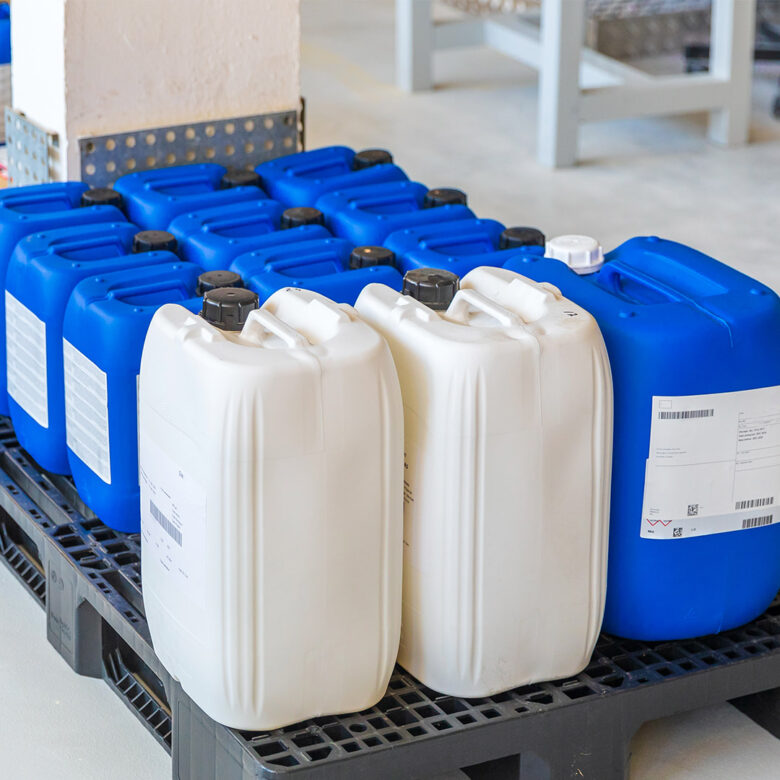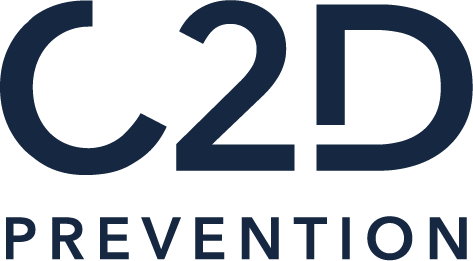WORKSHOP
Chemical Hazards

Building a Safety Culture Around Everyday Chemical Risks
The use of chemicals is not limited to laboratories or specialized industries. Every day, potentially hazardous substances are used in workplaces for maintenance, cleaning, or technical tasks. White spirit, bleach, paint strippers, descalers, and powerful drain cleaners are widespread—and often underestimated.
These so-called “household” products pose multiple risks: burns, poisoning, chemical reactions, fire, pollution… Simple, poorly executed actions can be enough to create a critical situation.
The “Chemical Hazards” workshop raises awareness about the widespread presence of these substances in work environments and equips teams to adopt rigorous preventive practices. It helps embed habits of vigilance, analysis, and appropriate response tailored to field realities.
OBJECTIVE
CONTENT
- Practical exercises simulating daily tasks while being limited in the use of one hand
- Topics covered: different types of chemicals, risks related to their use, labels and pictograms, storage, and procedures in case of an accident
- Sharing of prevention best practices
FORMAT
- Coaching : interactive discussions, exercises, role-playing
MAKE PREVENTION A REFLEX!
REGISTER YOUR COMPANY NOW
and ensure a safer work environment for everyone!
Format & Target Audience
The workshop can be delivered in person or remotely (online version led by a certified VILT – Virtual Instructor-Led Training – coach).
It is intended for all employees, supervisors, managers, and senior leadership.
Ideal group size: 6 to 12 participants to encourage active engagement, practical discussions, and real-world experience sharing.
Workshop Objectives
- Demystify common chemical products and understand their physical and chemical properties
- Identify hidden or overlooked hazards related to domestic chemicals used professionally
- Decode regulatory labels (GHS/CLP) and quickly interpret the associated risks
- Master the rules for safe storage, use, transport, and disposal of these substances
- Adopt automatic protective behaviors, both individual and collective
- Understand chemical reaction mechanisms that can lead to serious incidents (incompatibilities, evaporation, heat reactivity)
Training Methodology
The workshop uses an active, participatory approach focused on understanding, hands-on learning, and ownership:
- Targeted theoretical input
- Real-life scenarios shared by participants or simulated by the facilitator
- Practical tools (sorting sheets, visual memory aids, mini safety checklists)
Depending on the time available
Workshop Programme
1Anatomy of a Common Chemical Product
Using real or illustrated samples (cleaners, solvents, drain openers, etc.), participants learn to:
- Identify hazard categories
- Recognize exposure pathways (inhalation, contact, ingestion)
- Understand delayed or chronic effects (irritation, allergies, carcinogenic risks, etc.)
- Real-world accident cases—both those that occurred and near-misses—highlight the stakes involved.
2Reading Labels and Classifying Products
Through educational games and group challenges, participants analyze simplified safety data sheets, learn to decode GHS pictograms, and categorize products based on their risk level.
- Focus on mandatory label elements and their importance in emergencies
- Identify storage incompatibilities (acids/bases, oxidizers, solvents, etc.)
3Risks Related to Handling and Storage
A reflective session based on observed or simulated workplace scenarios. Participants explore:
- Common mistakes (accidental mixing, improper containers, missing labels, etc.)
- Risks linked to temperature, ventilation, and humidity
- Long-term health impacts of non-compliance with safety guidelines
Safe storage and handling practices are illustrated using diagrams and videos.
4Chemical Incident Response Simulation
- What actions should be taken in case of eye exposure, inhalation, or leakage?
- What immediate steps should be taken to protect people and contain the substance?
- What mistakes must be avoided in emergency situations?
Participants practice realistic response scenarios led by the facilitator to reinforce key behaviors and decisions.
5Carrying Vigilance into the Home
Many products used in the workplace are also found at home. This session creates a bridge to personal life:
- Best storage practices in kitchens, bathrooms, garages
- Safety habits in the presence of children or pets
- Tips to replace some chemical products with safer alternatives
This segment deepens engagement by giving practical continuity to the workshop’s lessons.
Why Offer
this workshop?
Because everyday chemical products are responsible for a significant portion of workplace—and household—accidents.
By making them visible, understandable, and regulated, you:
Reduce avoidable exposure
to hazardous substances
Increase your employees’ autonomy
in preventing chemical risks
Improve the overall safety culture
by making everyone a stakeholder in vigilance
Encourage responsible behavior
for individual, collective, and environmental health
Conclusion
This workshop is a powerful catalyst for changing safety practices. It supports a concrete, actionable,
and transferable approach to prevention—both professionally and personally.
Contact our team to integrate this workshop into your safety training plan
or adapt it to the specific needs of your sector.
